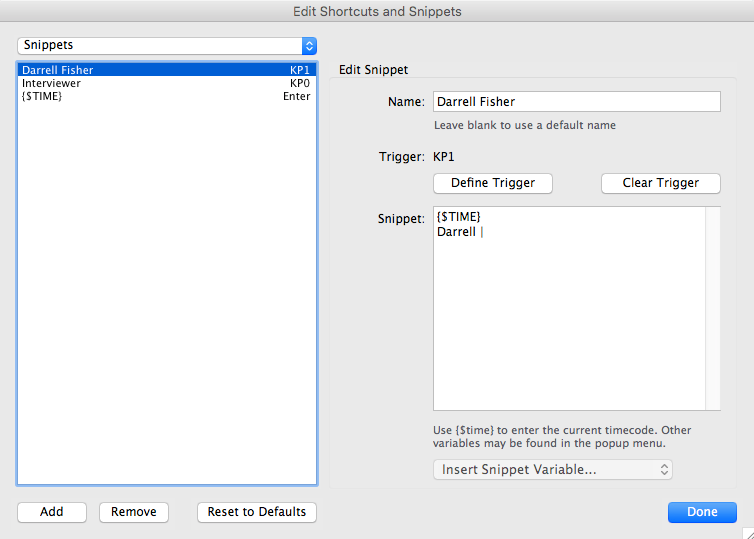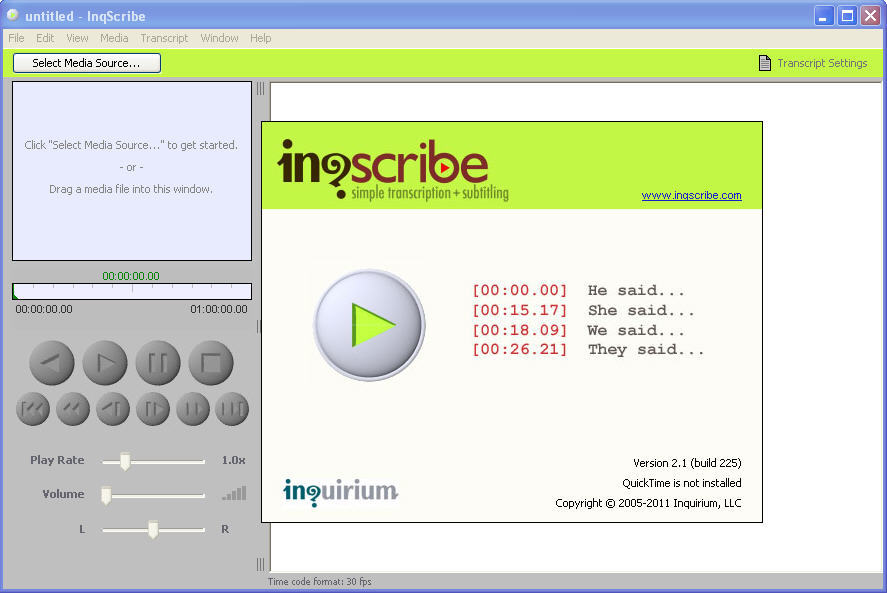

The key to getting the subtitles right is to insert the time code at the right intervals. To add subtitles, first open a new file in InqScribe and import your new video clip. Then transcribe the file (or, if you have done this already, copy and paste from your previous transcript).

#INQSCRIBE DOWNLOAD MOVIE#
Here you can define the format of the movie as well as where you want to save it on your hard drive. After this process has been completed, select ‘Export Movie’ from the Share menu. Once you are sure that the clip includes what you want, select ‘Finalize Project’ from the File menu. You can then replay the selection to check it, and add and delete segments as needed. Move the selection (marked by the yellow square) up to the project area. In the video browser (bottom right in the screen shot), use the yellow square to select the video segment that you would like to make into a separate file, and then drag the segment from the video browser to the project area (top left). It’s easy to use, has good customisation for snippets and shortcuts, and a clean user interface.Ĭreating a short clip from a larger segment of video dataįirst, create a new project in iMovie and import the video files that you need. Having experimented with InqScribe, HyperTranscribe and Nvivo for transcribing audio and video data, Inqscribe is definitely my favourite. iMovie is Apple’s stock app for video editing, while InqScribe is a transcription program developed by Inquirium. Here’s a quick recipe for how you can create a short clip from a longer video segment, and then add subtitles to the clip.įor these tasks, I use iMovie and InqScribe. If you are working with video data, you might want to present selected video clips at research group meetings or data workshops.


 0 kommentar(er)
0 kommentar(er)
